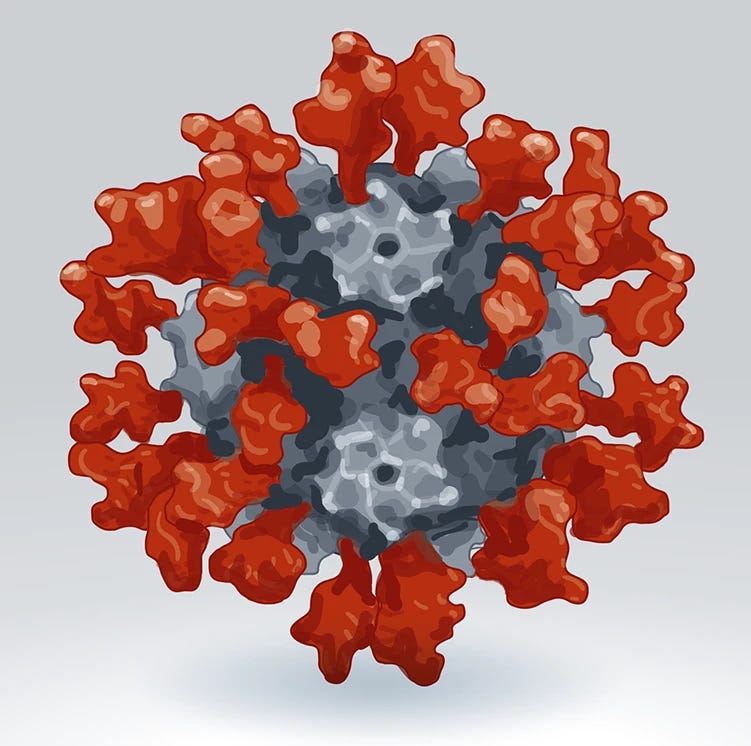Sci-Ed Update 248
Stress effects on the heart, we've got obesity all wrong, a viral thread from a professor, prisoners get time off for organ donation, updates on infections, dismantling of DEI progress, and more.
Want to get out of jail early? There’s a new bill for that in the Bay State. (Herald file photo)
Early release from prison for organ donations? Maybe in Massachusetts
A proposal by a state lawmaker would grant prisoners early release from their court imposed sentences of up to one year if they volunteer to donate their organs or bone marrow.
If made law, the bill would “allow eligible incarcerated individuals to gain not less than 60 and not more than 365 day reduction in the length of their committed sentence in Department of Corrections facilities, or House of Correction facilities if they are serving a Depar ...
Read more→ AandP.info/aio
Episode 52: A Thread Gone Viral: Last Night, A Professor Walked Into A Night Class...
In this episode, we’re going to talk about a Twitter thread that went viral. Dr. Liz Norell’s thread on her night class now has more than 800,000 views. On it, Norell talks about ice breakers, her liquid syllabus, ungrading, a “punchy” Word document syllabus she created the night before, and communicating the message of care and belonging.
To listen to this episode, click on the player (if present) or this link→ AandP.info/7b2
The Plan to Dismantle DEI
Two influential conservative think tanks described in detail on Wednesday how legislatures could dismantle the administrative structures that support diversity, equity, and inclusion efforts at public colleges.
Model state legislation, written by scholars at the Manhattan and Goldwater Institutes, if passed, would prohibit colleges from hiring diversity, equity, and inclusion officers; bar trainings that instruct staff to identify and fight against systemic racism; eliminate requirements for employees to commit to diversity statements; and could disallow even institutional commitments to social justice and recommendations that students be addressed by their preferred pronouns.
Read more→ AandP.info/op0
Everything You Know About Obesity Is Wrong
For decades, the medical community has ignored mountains of evidence to wage a cruel and futile war on fat people, poisoning public perception and ruining millions of lives.
It’s time for a new paradigm.Paradoxically, as the number of larger Americans has risen, the biases against them have become more severe. More than 40 percent of Americans classified as obese now say they experience stigma on a daily basis, a rate far higher than any other minority group. And this does terrible things to their bodies. According to a 2015 study, fat people who feel discriminated against have shorter life expectancies than fat people who don't. “These findings suggest the possibility that the stigma associated with being overweight,” the study concluded, “is more harmful than actually being overweight.”
Kevin Patton comment→ This article is a few years old, but still valuable for A&P faculty to read—and to think about.
Read more→ AandP.info/gjj
Blastomycosis, which mainly affects the lungs (illustrated here), is an infection caused by Blastomyces fungi. Such fungal infections are becoming more widespread. KATERYNA KON/SCIENCE PHOTO LIBRARY/GETTY IMAGES PLUS
4 key things to know about lung infections caused by fungi
Histoplasma, Blastomyces and Coccidioides fungi live in the soil as molds. Sometimes people breathe in spores the fungi give off as part of their natural life cycle. In the lungs, the fungi can transform into a quick-growing yeast form and cause a flulike illness, pneumonia or chronic disease. In a small number of cases, the fungi can spread to other parts of the body and cause more serious disease.
Kevin Patton comment→ Very clear article with good content for teaching A&P students.
Read more→ AandP.info/zdu
A nanoparticle vaccine from South Korean firm SK bioscience, approved in 2022. Nik Spencer/Nature. Adapted from A. C. Walls et al. Cell 183, 1367–1382 (2020).
The next generation of coronavirus vaccines: a graphical guide
New technologies might provide more potent or broader immunity — but will have to fight for market share.
These vaccines are a diverse group, but the overarching aim is to deliver long-lasting protection that is resilient to viral change. Some could protect against broader classes of coronavirus, including ones that have yet to emerge. Others might provide more potent immunity, might do so at lower doses, or might be better at preventing infection or transmission of the virus.
Here’s what to expect of this next generation of vaccines.
Kevin Patton comment→ This article from Nature also includes a video.
Read more→ AandP.info/05e
New research is sparking fresh concerns that the antiviral molnupiravir could contribute to SARS-CoV-2 variants.KOBI WOLF/BLOOMBERG VIA GETTY IMAGES
Could a popular COVID-19 antiviral supercharge the pandemic?
Merck & Co.’s molnupiravir appears to be speeding evolution of SARS-CoV-2
A widely used COVID-19 drug may be driving the appearance of new SARS-CoV-2 variants, sparking concerns it could prolong and even reinvigorate the pandemic. The drug, molnupiravir, produced by Merck & Co., is designed to kill the virus by inducing mutations in the viral genome. A survey of viral genomes reported in a new preprint, however, suggests some people treated with the drug generate novel viruses that not only remain viable, but spread.
Read more→ AandP.info/muk
Image: PxHere
Neurons Can Smell a Threat
A recent study published in The Journal of Neuroscience revealed our sense of smell guide how the brain responds to a social threat. Using a m model, researchers have identified a specific set of neurons in the accessory olfactory system that can detect the scent of a potential threat.
Understanding the mechanisms involved in the accessory olfactory system can offer critical insights into how the brain processes threat assessment. Threat assessment happens when an animal encounters previously unknown odors. Novel predator odor such as a snake to a mouse can cause the animal to engage in a threat assessment behavior in which the animal is neither acting “fearful” nor “safe.” Most animals rely on scent for survival and reproduction, but the study revealed that neurons “learn” if a smell indicates a threat.
Read more→ AandP.info/szm
49 Tricks for Retention & Success in Online Courses | TAPP 21
Online courses continue to have a notoriously low retention rate and success rate compared to traditional courses. Kevin shares some general concepts and practical ideas that have helped him improve retention and pass rates in his distance courses. But there are more! The conversation will continue in the next episode.
To listen to this episode, click on the player (if present) or this link→ theAPprofessor.org/podcast-episode-21.html
Image: PxHere
Stress Impacts Female & Male Hearts Differently
New research published in Science Advances has shown that the stress hormone associated with the “fight or flight” response causes different reactions in male and female mouse hearts. This result could help explain sex differences in humans, including differences in arrhythmia risk, heart failure incidence, and responses to medications.
Kevin Patton comment→ This article includes a video
Read more→ AandP.info/hdb










